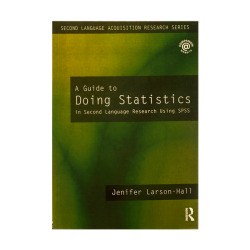Beyond Tests: Alternatives in assessment
Chapter 6
Beyond Tests: Alternatives in assessment
Book name: Language Assessment Principles and Classroom Practices
Written by: Brown and Abeywickrama
Summarized by: Saeed Mojarradi Ph.D. Candidate
—————————————–
In the public eye, tests have acquired an aura of infallibility. (Without errors)
Everyone wants a test for everything, especially if the test is cheap, quickly administered, and scored as soon as possible.
Some believe that all testing is invidious. But tests are simply measurement tools.
It is clear by now that tests are one of a number of possible types of assessment.
The distinction:
An important distinction was made between testing and assessing. Tests are formal procedures, usually administered within strict time limitations, to sample the performance of a test – takers in a specific domain.Assessment has a much broader concept in that most of the time when teachers are teaching, they are also assessing. Assessment includes all occasions from informal impromptu observations and comments up to and including tests.
In the decade of the 1990s, when a number of educators questioned the notion that all people and all skills could be measured by traditional tests, a novel concept emerged that began to be labeled
“alternative assessment.”
As teachers and students were becoming aware of shortcomings of standardized testing and the problems found with such testing was proposed.
That proposal was to assemble additional measures of students-portfolios, journals, observations, self-assessments, peer-assessments, and the like.
Why should we even refer to the notion of alternatives when assessment already encompasses such a range of possibilities?
Brown and Hudson responded: they noted that to speak of alternative assessment is counterproductive because the term implies something new and different that may be exempt from the requirements of responsible test construction.
We remembered that all tests are assessments but that, more importantly, not all assessments are tests.
The characteristics of various alternatives in assessment were summed up by Brown and Hudson:
- Require students to perform , create , produce , or do something
- Use real –world contexts or simulations
- Are not invading in that they extend the day-to-day classroom activities
- Allow students to be assessed on what they normally do in class every day.
- Use tasks that represent meaningful instructional activities.
- Focus on processes as well as products
- Higher – level thinking and problem – solving skills
- Provide information about both the strengths and weaknesses of students
- Are multiculturally sensitive
- Ensure that people, not machines, do the scoring, using human judgment.
- Encourage open disclosure of standards and rating criteria
- Call on teachers to perform new instructional and assessment roles
The dilemma of maximizing both practicality and wash back
Tests , especially the large – scale standardized tests tend to be one-shot performances that are timed , multiple-choice , decontextualized , norm – referenced , and that foster extrinsic motivation. On the other hand , tasks like portfolios , journals , and self-assessments are :
- Open-ended in their time orientation and format
- Contextualized to a curriculum
- Referenced to the criteria of that curriculum
- Likely to build intrinsic motivation
Formal standardized tests are almost by definition highly practical, reliable instruments. They are designed to minimize time and money on the part of test designer and test-taker and to be accurate in their scoring.
Alternatives such as portfolios, conferencing with students on drafts of written work, or observations of learners over time all require considerable time and effort on the part of the teacher and the student.
Looking at a figure on page 124 we see that as a technique increases in its wash back and authenticity, its practicality and reliability tend to be lower. Conversely, the greater the practicality and reliability, the less likely you are to achieve beneficial wash back and authenticity.
In that case there has been placed three types of assessment on the regression line to illustrate.
- Large-scale, standardized multiple-choice tests
- In-case, short-answer essay tests
- Portfolios, journals, and conferences
- Large – scale multiple-choice tests cannot offer much wash back or authenticity, and portfolios and such alternatives cannot achieve much practicality or reliability.
A number of approaches to accomplishing the end in which we can transform otherwise inauthentic and negative-wash back producing tests into more pedagogically learning experiences. They include:
- Building as much authenticity as possible into multiple-choice
- Designing classroom tests having both objective-scoring and open ended response sections.
- Turning multiple – choice test results into diagnostic feedback
- Maximizing the preparation period before a test
- Teaching test-taking strategies
- Helping students to see beyond the test not teaching to the test
- Information on a student before making a final assessment of competence
Performance-based assessment
The other name for this performance based assessment, sometimes merely called performance assessment.
Is this different from what is being called alternative assessment?
The push toward more performance based assessment is part of the same general educational reform movement that raised strong objections to using standardized test scores as the only measures of student competence.
Performance based assessment would require the performance of the actions or samples which would be systematically evaluated through direct observation by a teacher.
Performance based assessment, according to Norris (1998) involves test takers in the performance of tasks that are as authentic as possible and that are rated by qualified judges.
J.D. Brown (2005) noted that a related concept , task – based assessment , is not so much a synonym for performance based assessment as it is a subset in which the focus of assessment is explicitly on particular tasks or types.
According to Pierce (1996) performance based assessment is a subset of authentic assessment. In other words, not all authentic assessment is performance based.
One could infer that reading, listening and thinking have many authentic manifestations, but because they are not directly observable in, they are not performance based.
Again according Pierce and Malley the characteristic of performance based assessment are:
- Students take a constructed response( selecting answer from options)
- They engage in higher-order thinking with open=ended tasks
- Tasks are meaningful, engaging, and authentic.
- Tasks call for the integration of language skills
- Both process and product are assessed.
- Depth of a student’s mastery is emphasized over breath.
Performance based as assessment procedures need to be treated as traditional tests:
- State the overall goal of the performance
- Specify the criteria of performance in detail
- Prepare students for performance in step-wise progressions
- Use a reliable evaluation form, checklist and rating sheet.
- Treat performances as opportunities for giving feedback
Rubrics
Rubrics that teachers engage in their day-to-day based assessment procedures are not a separate alternative in assessment but rather a virtually indispensable tool in effective, responsible, performance based assessment.
A rubric is a device used to evaluate open-ended oral and written responses of learners. Some rubrics involve scaling, that is, the assignment of numbers (a numerical scale) to the described levels of performance.
In recent years, with a marked increase in the use of alternatives in classroom based assessment, rubrics have taken a front seat in teacher’s evaluative tools.



